Caldwell Building
Introduction
Text-to-speech Audio
Images
The Caldwell Building, circa 1900
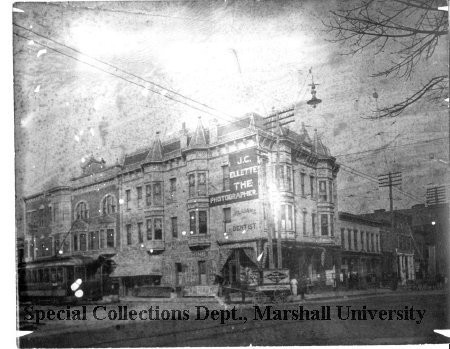
Photographer Alfred T. Proctor's studio was located inside the Caldwell Building
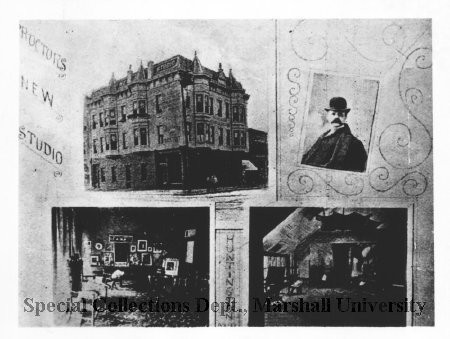
The Caldwell Building, circa 1910
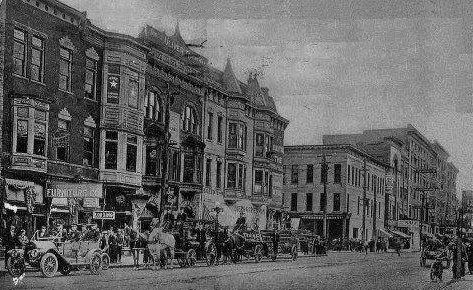
James Lewis Caldwell at his desk, 1916
.jpg)
The Caldwell Building during the early 1930s
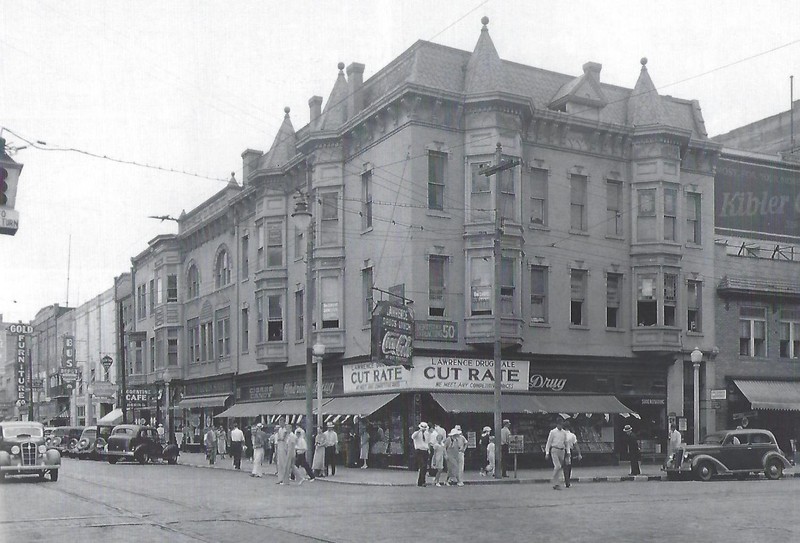
The building was being remodeled during the flood of 1937
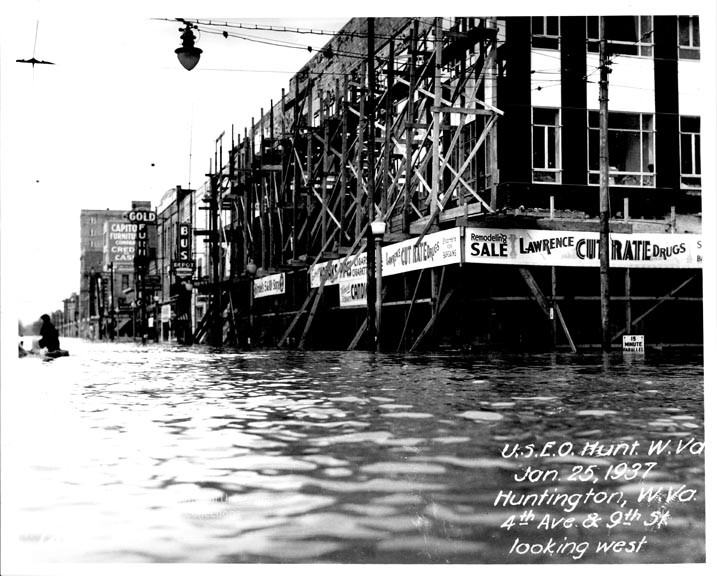
The Caldwell Building, in the background of this photo taken during the 1937 flood
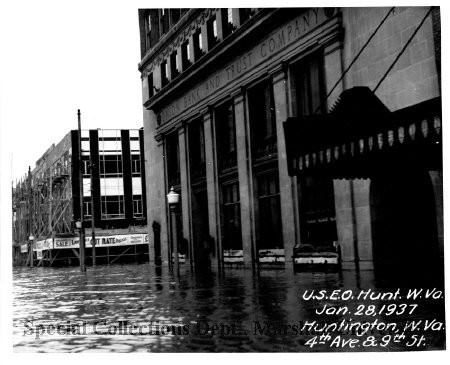
The Caldwell Building, pictured in 1937
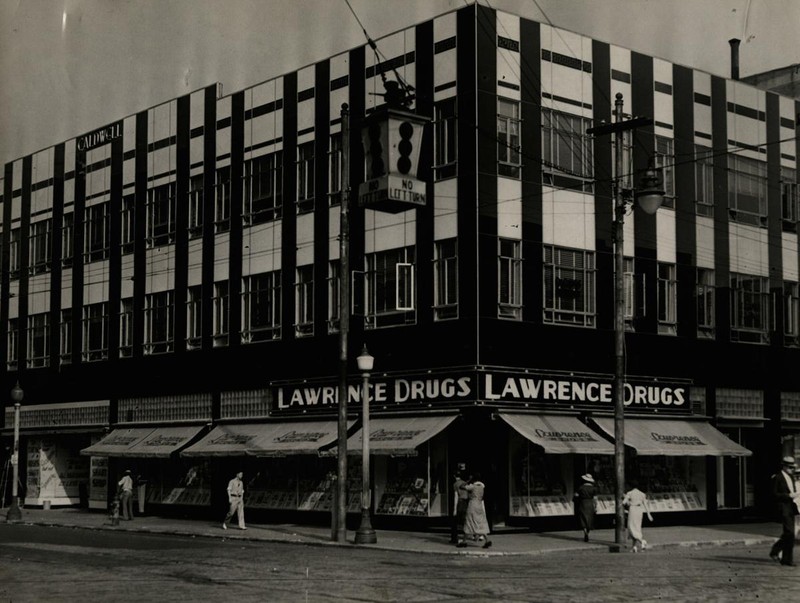
The Caldwell Building, 1940
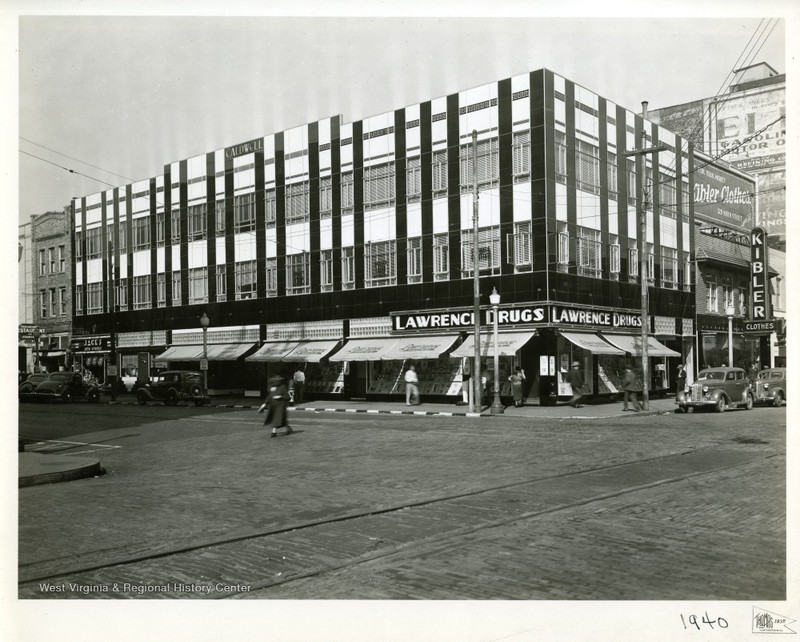
Six buildings designed by Sidney Day
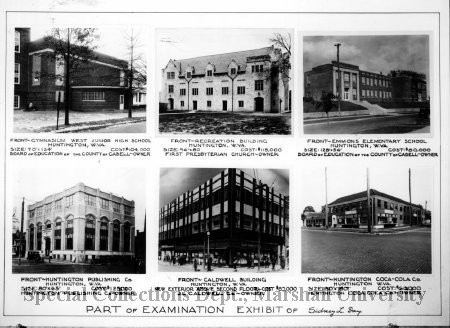
The Caldwell Building at the busy corner of Ninth Street and Fourth Avenue
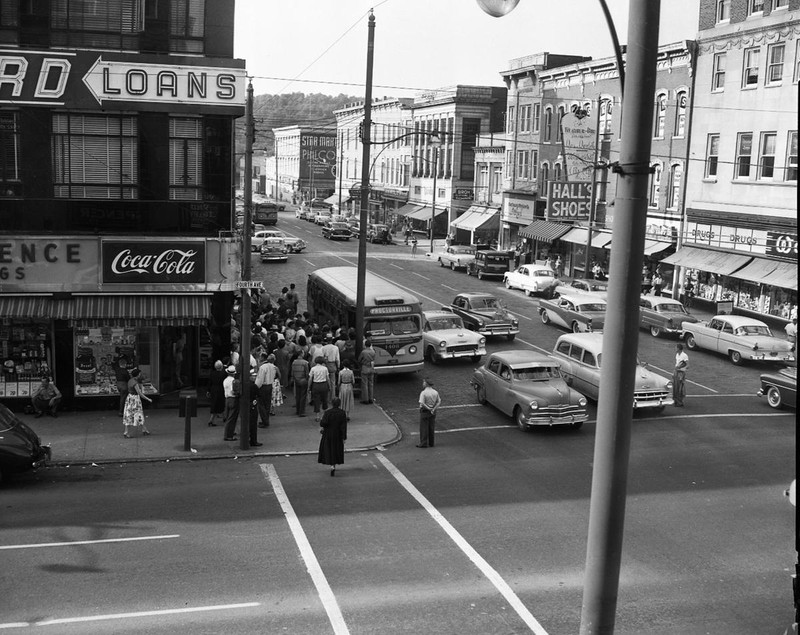
The Caldwell Building during the annual marching festival
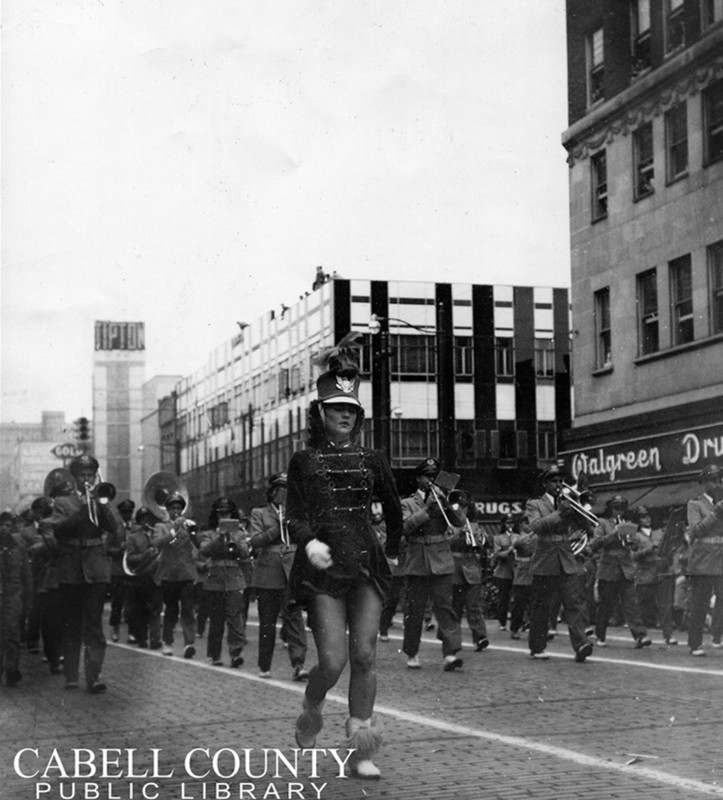
The Caldwell Building in the background, during the 1950 marching festival
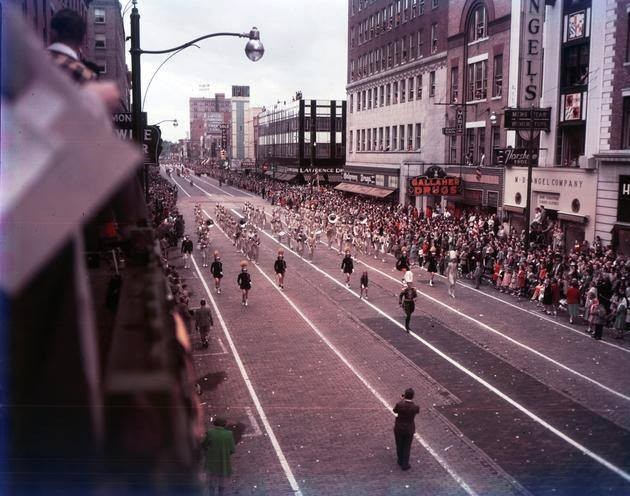
The Caldwell building behind a car

Ad for Lawrence Drugs from the mid-1950s
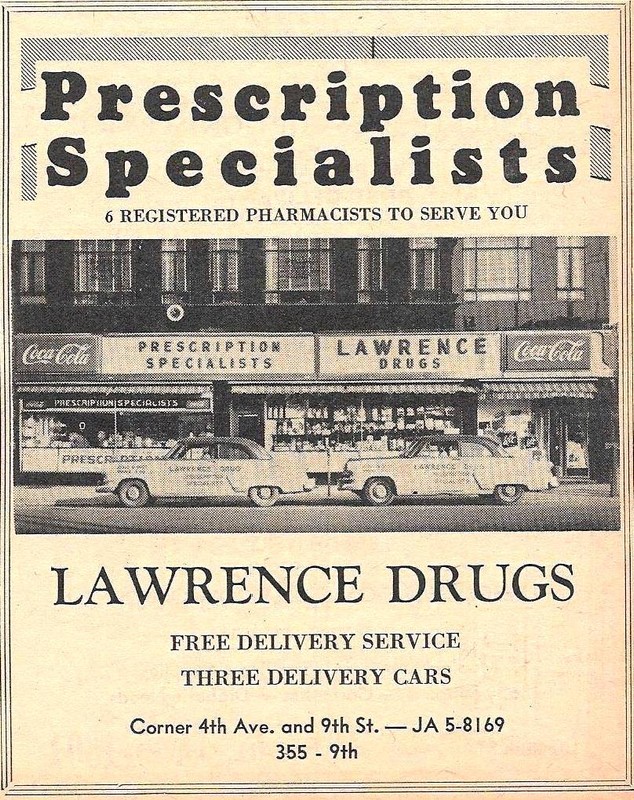
The Caldwell Building in 1967
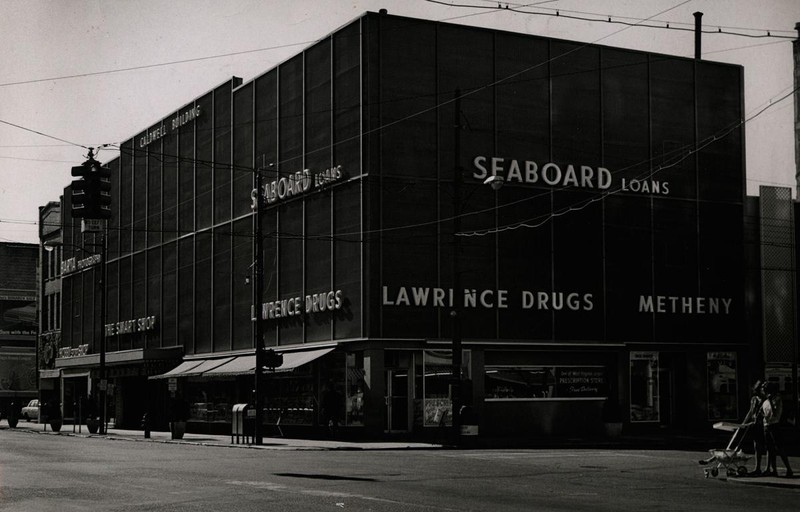
The building during the 1970s
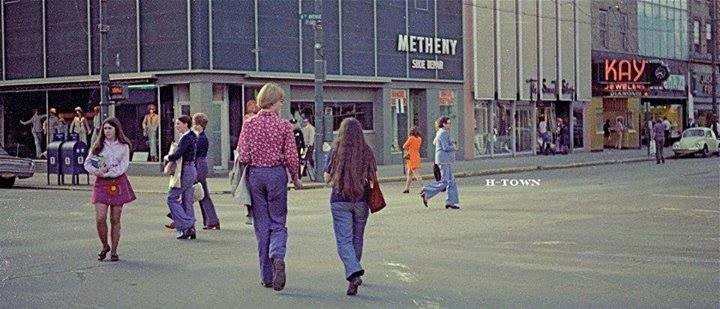
The Caldwell Building, visible in the background with its metal skin in 1973
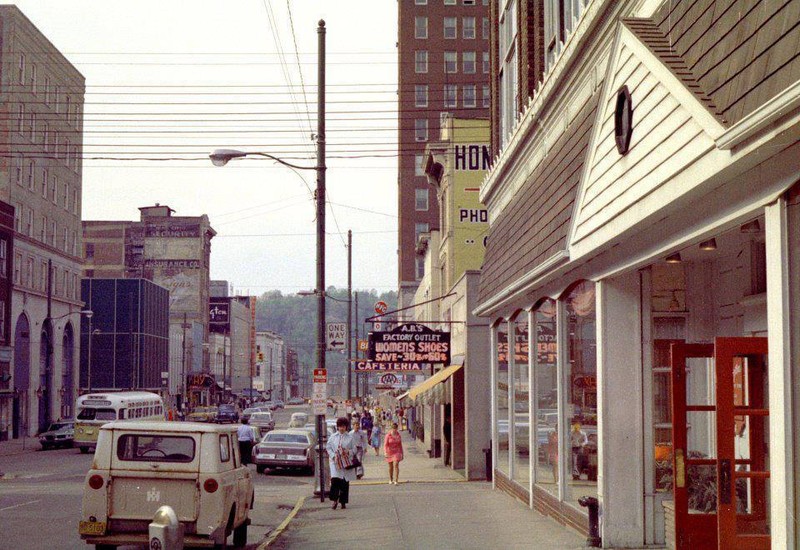
The building today
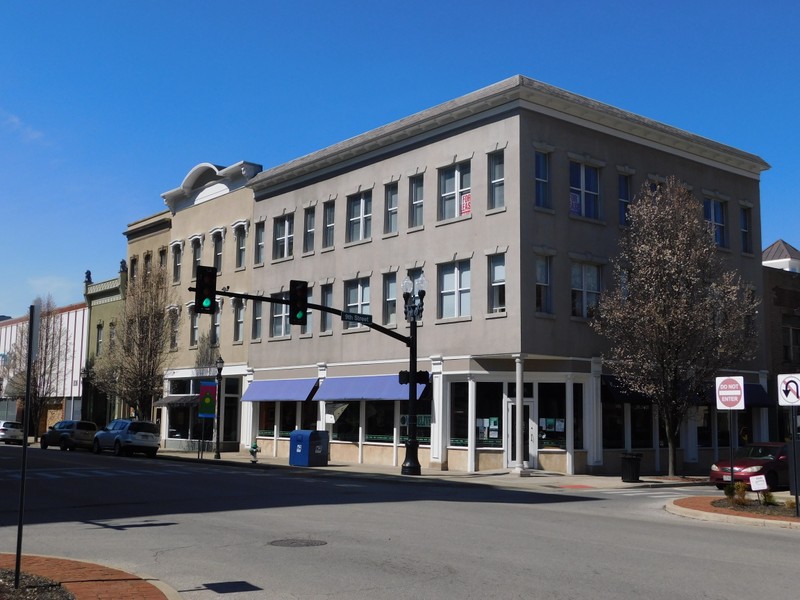
The building today
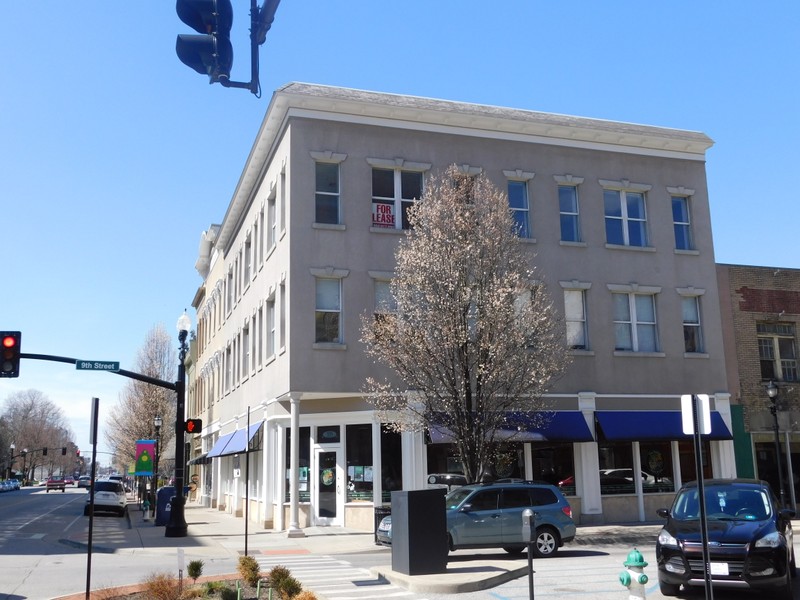
Backstory and Context
Text-to-speech Audio
James Lewis Caldwell was born in Elizabeth, Wirt County, West Virginia on May 20, 1846. He was educated in Meigs County, Ohio, where he received the equivalent of a high school education. In late 1862, seventeen-year-old Caldwell enlisted in Company F of the Sixtieth Ohio Infantry. He went on to fight in the battles of the Wilderness, Spotsylvania, Cold Harbor, and Weldon Railroad, along with minor skirmishes up to the end of the Civil War. After the war, Caldwell worked for the Peabody Insurance Company of Wheeling for one year. He then settled in Guyandotte, where he ran a successful lumber business for eighteen years. In 1884, Caldwell and several partners organized the First National Bank of Huntington, of which he served as president for almost forty years. In addition to banking, Caldwell organized the Huntington Electric Light and Street Railway Company in 1892, built the Guyandotte Valley Railway, and served as president of the Consolidated Light & Railway Company at Republican, Illinois. He was also president of the Dingess-Run Coal Company, secretary and treasurer of the Logan Cannel Coal Company, secretary and treasurer of the Warehouse Land Company, and a director and member of the executive committee of the Huntington Land Company. Caldwell passed away in Huntington on October 18, 1923 at the age of seventy-seven.
In 1887, he constructed the Caldwell Building at the corner of Fourth Avenue and Ninth Street in Huntington’s small but growing downtown. The three-story structure, distinguished by its sets of bay windows on the upper two floors, was one of the city’s earliest business buildings. From the late 1880s to the turn of the twentieth century, it housed the city’s second post office and was even referred to as the Post Office Building. Meanwhile, the building’s second and third floors contained office spaces, including those of the Huntington Water Works, which was founded in 1886 to supply the city with water. Other professionals, such as dentists and doctors, also housed their practices in the building’s upper floors. For a time, the third floor of the Caldwell Building was occupied by the photography studios of J.C. Ellette and later Alfred T. Proctor.
In the mid-1930s, Caldwell’s daughters Onida Caldwell Watts and Ida Regina Caldwell McFadden oversaw the remodeling of the Caldwell Building’s exterior. By that time, the building was considered an aging structure, as indicated by a November 1936 Huntington Advertiser headline announcing that the remodeling of the “old landmark” had begun. The Caldwell family hired prominent local architect Sidney Day to remodel the building. Day, who often worked alongside his father Robert, was responsible for designing a number of buildings in early twentieth-century Huntington, including the Huntington Publishing Company, the West Wing of the Cabell County Courthouse, and Emmons Elementary School. For the Caldwell Building, Day installed custom Black marble and cream glass mounted in chrome on its facade, creating a distinctive mix of Bauhaus and International styles. Following the 1936 remodeling, the exterior of the Caldwell Building remained unchanged until the 1960s, when it was covered in large metal panels. Many of downtown Huntington’s buildings were remodeled in the same way at this time, with metal skins replacing original facades in an effort to make the structures appear more “modern.”
Over the years, the Caldwell Building was occupied by a series of different businesses. From the early 1930s until the 1970s, the building’s large ground floor space was home to Lawrence Drugs, a locally-owned drugstore. Meanwhile, a smaller storefront on the Fourth Avenue side of the building was occupied by The Smart Shop, while a storefront on the Ninth Street side held Metheny Shoe Repair. The Smart Shop soon grew in popularity, leading the clothing store to relocate to a larger site next to Metheny Shoe Repair. After Lawrence Drugs closed during the mid-1970s, The Smart Shop expanded again to occupy its former space, where it remained for at least another decade. Over the years, the upper floors of the building were home to various offices, including those of Seaboard Loans for many years. In more recent years, the Caldwell Building was occupied by Pet Palace, a store offering pet boarding, grooming, and pet supplies, before it moved to a new location across the street.
During the 1990s, James Lewis Caldwell’s great-granddaughter Liza Caldwell oversaw the renovation of the Caldwell Building. She removed the metal panels that covered the structure, and restored the exterior to a more classic appearance. Emphasis was placed on creating a style that matched well with the surrounding buildings while preserving the structure’s historic nature. This restoration was possible due to the support of the Main Street organization, which helped property owners restore historic buildings through low-interest loans and tax credits. As a result of that effort, the sheet metal slipcovers were removed from the sides of several downtown properties, exposing their original architecture. However, following changes in leadership and dwindling funds, the Main Street organization was dissolved within a few years. Thanks to the organization’s support renovating the Caldwell Building, the property has been easier to fill with tenants in recent years. The ground floor is currently occupied by Bodega Market and Cafe, and the upper floors hold offices.
Sources
Callahan, James Morton. The History of West Virginia, Old and New. Volume 2. Chicago, IL. The American Historical Society, Inc., 1923.
Casto, James E. Lost Huntington: Caldwell Building, Huntington Herald-Dispatch. April 25th 2019. Accessed July 22nd 2020. https://www.herald-dispatch.com/special/lost_huntington/lost-huntington-caldwell-building/article_9f7b85d5-5715-5815-a84a-d049b5559bfb.html.
Dickinson, Jack L. and Alison K. Summer-Ramirez. Historic Huntington Businesses: The Birth of Huntington, W.Va. 1871-1900. Huntington, WV: Marshall University Libraries, 2016.
Hardiman, Jean Tarbett. Organization played key role in bringing history back to downtown Huntington, Huntington Herald-Dispatch. July 26th 2009. Accessed July 22nd 2020. https://www.herald-dispatch.com/business/organization-played-key-role-in-bringing-history-back-to-downtown-huntington/article_3022bae9-3e46-5357-beae-da15487ee578.html.
Shawkey, Morris Purdy. West Virginia, In History, Life, Literature and Industry. Volume 5. Charleston, West Virginia. The Lewis Publishing Company, 1928.
https://marshall.pastperfectonline.com/photo/4D2F4379-622F-4FCA-827F-103852134415
https://marshall.pastperfectonline.com/photo/14FB76DA-AB4A-475D-85E2-081181430754
https://www.facebook.com/photo.php?fbid=1199629836743874&set=gm.1745438639013545&type=3&theater&ifg=1
https://texashistory.unt.edu/ark:/67531/metapth706334/m1/1/
https://www.herald-dispatch.com/special/lost_huntington/lost-huntington-caldwell-building/article_9f7b85d5-5715-5815-a84a-d049b5559bfb.html
https://mds.marshall.edu/sc_usac/24/
https://marshall.pastperfectonline.com/photo/551B87DC-B3C5-4D04-B47A-304632683929
https://www.herald-dispatch.com/business/organization-played-key-role-in-bringing-history-back-to-downtown-huntington/article_3022bae9-3e46-5357-beae-da15487ee578.html
https://wvhistoryonview.org/catalog/007038
https://marshall.pastperfectonline.com/photo/34C9EA18-4A63-4CD2-B68F-191757134098
https://www.herald-dispatch.com/multimedia/photo_galleries/photos_historical/gallery-do-you-remember----feb-7-2012/article_1632276c-d7ea-5cd0-88ca-7fc4786234d8.html
https://cabe.ent.sirsi.net/client/en_US/cabell/?rm=BAND+FESTIVAL+0%7C%7C%7C1%7C%7C%7C0%7C%7C%7Ctrue&dt=list
https://www.facebook.com/photo.php?fbid=2114910638549118&set=gm.2045001035723969&type=3&theater&ifg=1
https://www.facebook.com/photo.php?fbid=1334640016576188&set=gm.1795826260641449&type=3&theater&ifg=1
https://www.facebook.com/photo.php?fbid=2142783349084590&set=p.2142783349084590&type=3&theater
https://www.herald-dispatch.com/business/organization-played-key-role-in-bringing-history-back-to-downtown-huntington/article_3022bae9-3e46-5357-beae-da15487ee578.html
https://www.facebook.com/photo.php?fbid=1757898340917018&set=p.1757898340917018&type=3&theater
https://www.facebook.com/photo.php?fbid=3100766016630237&set=gm.2338332726390797&type=3&theater&ifg=1
https://properties.zoomprospector.com/HUNTINGTON/property/-/787C21D0-360B-45C8-AAB0-AB2C64866991
https://properties.zoomprospector.com/HUNTINGTON/property/-/787C21D0-360B-45C8-AAB0-AB2C64866991
